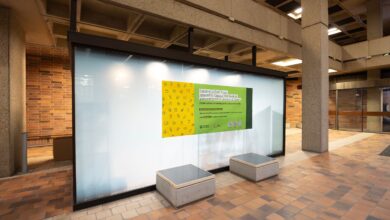 Supplied
SuppliedOver the last few weeks, Alberta has experienced a rise in respiratory viruses, especially among its elderly population, according to Dr. Stephanie Smith. Dr. Smith is an infectious disease physician at the University of Alberta Hospital and professor in the department of medicine.
According to Dr. Smith, elderly individuals are at a high risk of contracting respiratory viruses. The prominent virus that patients are contracting is SARS-CoV-2, the virus that causes COVID-19.
From September to December, the total number of respiratory virus outbreaks increased significantly, according to the provincial respiratory virus dashboard. Additionally, as of January 5 the province saw a total of 283 respiratory illness cases in long-term care facilities. In supportive living homes, 350 cases were attributable to respiratory illnesses.
“The majority of patients that we see being admitted now are patients that have lots of risk factors for severe disease. So elderly, immunocompromised patients that have multiple health problems like diabetes [and] heart disease,” Dr. Smith said.
Diseases like COVID-19, RSV, and influenza contributing to hospitalization
“We’ve been dealing with COVID-19 for quite a long time now,” Dr. Smith said. “Although we’re not in a pandemic anymore, we certainly still see patients being admitted with complications of COVID-19.”
In addition to COVID-19, Dr. Smith highlighted other respiratory viruses, such as influenza and respiratory syncytial virus (RSV). Respiratory viruses spread person-to-person or through contact with contaminated surfaces or objects. According to Dr. Smith, these diseases are also contributing to the current surge in hospitalizations.
“We certainly have seen a significant increase in cases of influenza over the past couple of weeks and patients with fairly severe influenza,” Dr. Smith said. She added this increase is also impacting younger people and people with more comorbidities.
Residents in long-term care facilities who’ve received booster shots see “a big difference in terms of severity of disease”
Dr. Smith attributed the relatively low hospitalizations of long-term care facility residents to COVID-19 vaccine uptake.
“Residents in long-term care facilities have gotten their [booster] vaccines. That certainly still makes a big difference in terms of severity of disease. So, they may still get COVID-19, but they don’t tend to get as sick … and require hospitalization.”
Dr. Smith emphasized the importance of receiving up-to-date vaccinations as a community-level approach to reducing cases of respiratory illness. This can also help alleviate strain on the health care system, Dr. Smith said.
“If it has been more than six months since your last booster or infection, then that’s the time when you should get vaccinated. Certainly for those who are at increased risk of severe disease, [make] sure that you’re getting your booster.” Dr. Smith said.
According to Dr. Smith, many residents in long-term care facilities are receiving their COVID-19 boosters, whereas this isn’t the case in the wider community.
Dr. Smith also highlighted the importance of reducing the exposure to respiratory viruses for elderly individuals and those who are at risk for severe disease by staying home.
“[Despite not being] in a pandemic anymore, we still do have to be aware of loved ones and patients that are at risk for severe disease,” Dr. Smith said.
“In addition to COVID-19, we have all these other respiratory viruses that we also have to pay attention to. That’s really what’s creating challenges for our hospital system right now.”




